Moje třetí nejpočetnější pozorování je Polák chocholačka celkem 104x k dnešnímu dni.
Snadno by ho předběhla Kachna divoká, ale ty jsou často chované uměle a proto je fotím méně a většinou i na jiných lokalitách.
V Česku chocholačka hnízdí i přezimuje a tak se dá potkat jak na rybnících, kde v létě fotím rodinky, tak na přehradách a velkých řekách, kde obvykle migrují a zimují.
My third most numerous sighting is a Polish stilt 104 times total to date.
He could easily be outdone by the Mallard, but they are often artificially bred and therefore I photograph them less and usually in other locations.
In the Czech Republic, the tufted duck breeds and overwinters and so can be found both on ponds, where I photograph families in summer, and on dams and large rivers, where they usually migrate and winter.
https://www.inaturalist.org/taxa/7046-Aythya-fuligula
V Praze stačí zajít k Vltavě, kde zimují pravidelně, i když v mnohem menších počtech než dříve. Tady jsou tři samice pohromadě.
In Prague, just go to the Vltava River, where they winter regularly, although in much smaller numbers than before. Here there are three female ducks together.
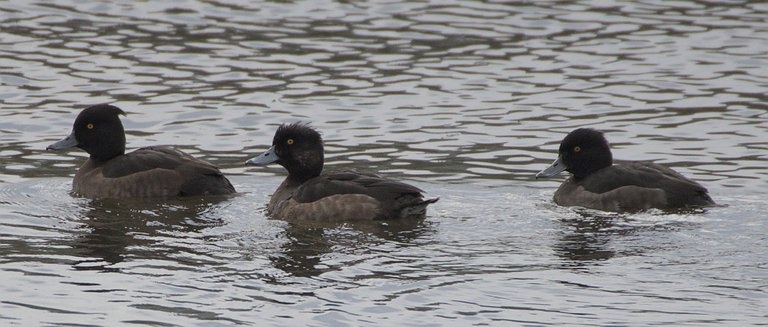
https://www.inaturalist.org/observations/145781410
Tady ta kachna má posezení s výhledem na Pražský hrad a nad sebou desítky turistů. Fotka je to jak ze ZOO, ale jinak než shora se tu fotit nedá.
Here the duck has a sitting area with a view of Prague Castle and dozens of tourists above it. It's a photo like from the zoo, but you can't take photos here except from above.
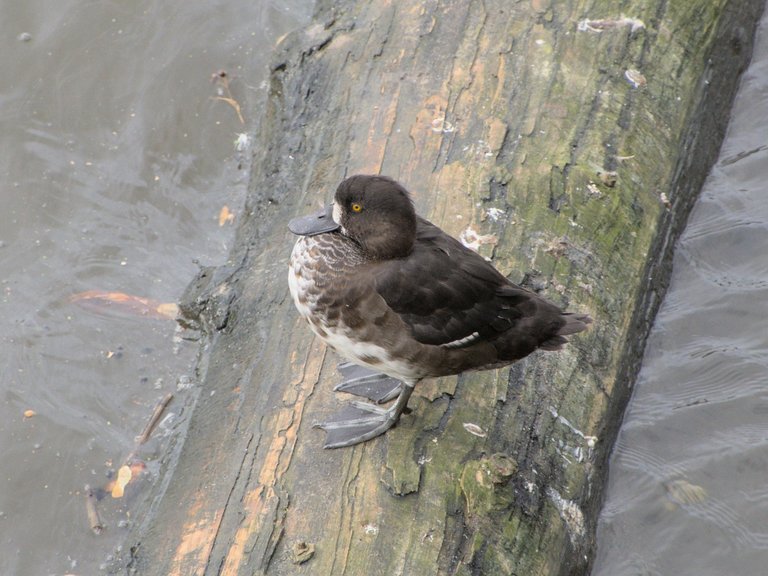
https://www.inaturalist.org/observations/144070768
Na vodní zdrži Gabčíkovo je v zimě spousta různých tažných kachen.
Tato lokalita na Dunaji u Bratislavy je typická velkými vlnami. Plocha je to obrovská.
To se za větru pozoruje a fotí moc špatně. Je to opravdu smůla, když si člověk udělá dvoudenní výlet až na slovensko - maďarské hranice a pak fouká mrazivý vítr, nejlépe s deštěm nebo sněhem.
Místo krásného výhledu vítr člověka skoro porazí a kachny se jen občas někde vyhoupnou na vlně a zmizí. Na fotce jsou tři samci.
There are many different migratory ducks on the Gabčíkovo water reservoir in winter.
This location on the Danube near Bratislava is typical of big waves. It's a huge area.
It is very difficult to observe and photograph in the wind. It's a real bummer when you make a two-day trip to the Slovak-Hungarian border and then the wind blows freezing cold, preferably with rain or snow.
Instead of a beautiful view, the wind almost knocks you down and the ducks just occasionally swing out on a wave and disappear. Three male ducks on the photo.
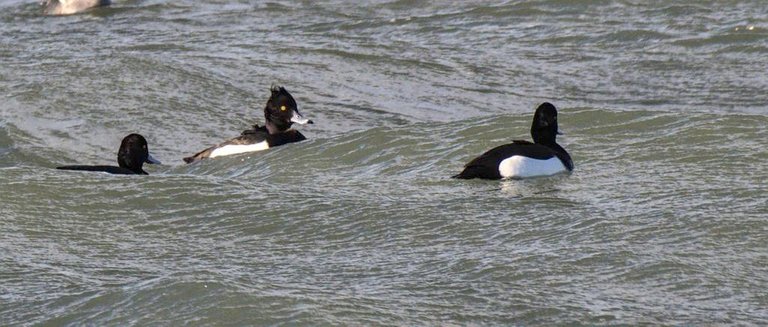
https://www.inaturalist.org/observations/106754235
V Praze i hnízdí. Tato rodinka je z Modřanských tůní u Vltavy, což je krásná lokalita, kde žijí i bobři.
They also nest in Prague. This family is from Modřany pools near Vltava river, which is a beautiful place where beavers live.

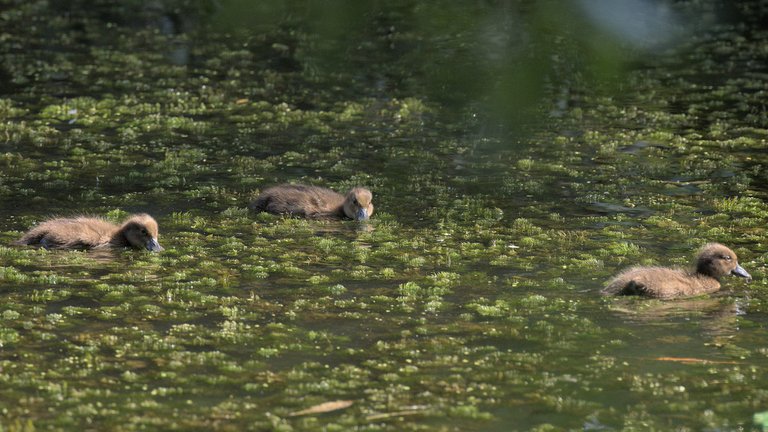
https://www.inaturalist.org/observations/142445469
Tato opravdu velmi početná rodninka je z mnohem typičtější lokality a to jsou Jihočeské rybníky.
Focení na hladině rybníka v plném slunci není na krásu, ale druh a počty se určit dají, a o to jde.
Ve skutečnosti ani všechny káčata nemusejí být z jednoho hnízda.
Tam kde je hnízdících kachen hodně, tak se mláďata různě přidružují a to i různé druhy.
This really very numerous family is from a much more typical locality, the South Bohemian Ponds.
Photographing on the surface of the pond in full sun is not for beauty, but the species and numbers can be determined, and that's the point.
In fact, not even all the ducklings have to be from the same nest.
Where there are a lot of nesting ducks, the chicks will associate differently and even different species.
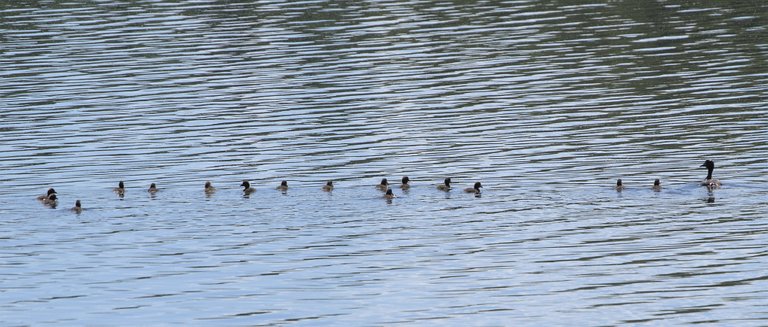
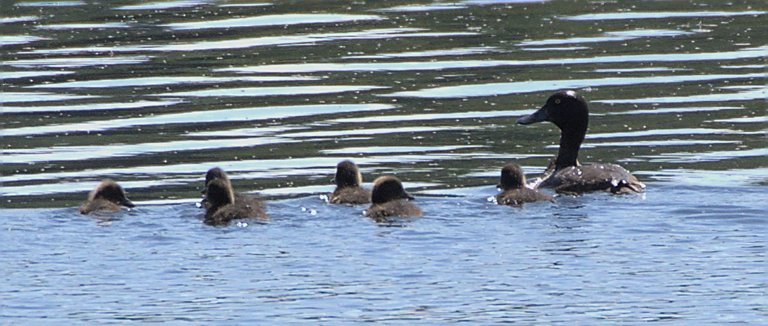
https://www.inaturalist.org/observations/142362478
Mnohem typičtější rodinka a v daleko lepším světle.
Krásně vyniknou černá káčátka a žluté oko matky.
A much more typical family and in a much better light.
The black ducklings and the yellow eye of the mother stand out beautifully.
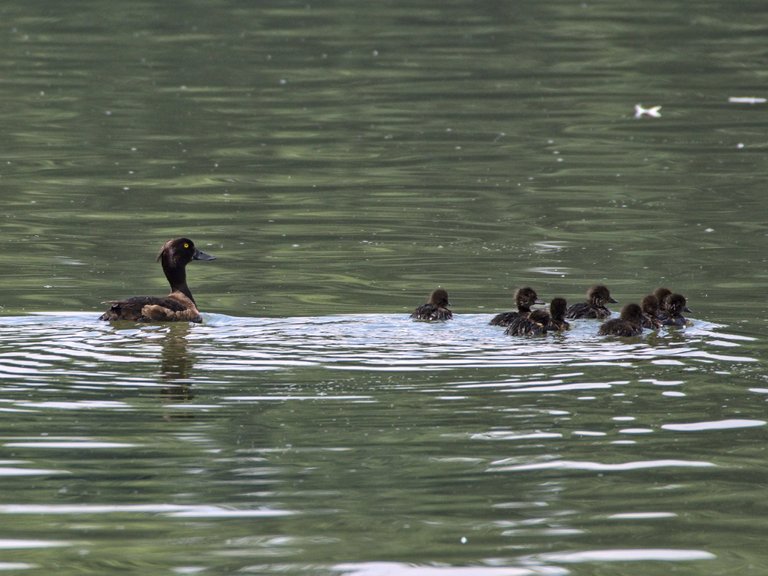
https://www.inaturalist.org/observations/68012168
I always like the yellow eye of this bird.